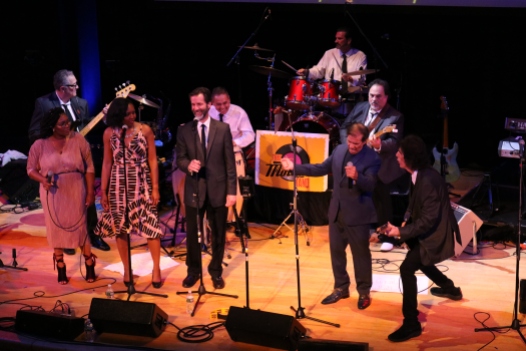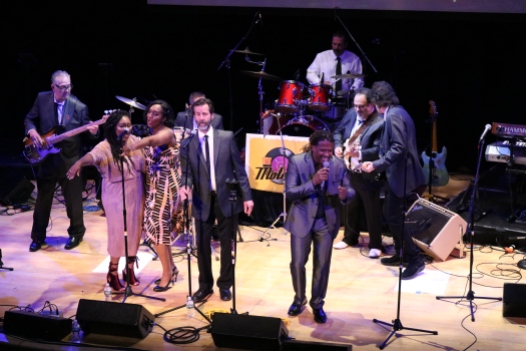
Chicago Meets Motown
Broadway’s Town Hall, June 28, 2018
Reviewed by Robert Viagas
Fans of 1960s and ’70s rock and soul got a tasty black-and-white cookie of a concert June 28, when top-shelf tribute bands Beginnings and That Motown Band tore up New York’s Town Hall Theatre with faithful recreations of hits by, respectively, rock band Chicago and the great stars of the Motown Records label.
First up was That Motown Band, an eight-piece ensemble with three singers, notably the stellar Nathina Inez, who soared on “I Want You Back,” and Natasha Nadia McDuffie, whose voice throbbed on “Gee Whiz.”
 Welcome energy was pumped into the show by two guest stars, three-time Grammy nominee Ryan Shaw, who had the audience jumping on “Twisting the Night Away,” and Charlie Ingui of Soul Survivors, a real crowd-pleaser, who got down with the audience and his fellow musicians on numbers like “Love Train,” and provided some welcome movement to the band’s largely static staging.
Welcome energy was pumped into the show by two guest stars, three-time Grammy nominee Ryan Shaw, who had the audience jumping on “Twisting the Night Away,” and Charlie Ingui of Soul Survivors, a real crowd-pleaser, who got down with the audience and his fellow musicians on numbers like “Love Train,” and provided some welcome movement to the band’s largely static staging.
This concert was not connected with the Broadway Motown tribute Motown the Musical, which ran 738 performances 2013-2015 at the Lunt-Fontanne Theatre, three blocks across Times Square from Town Hall, and returned briefly in 2016.
Act II of Chicago Meets Motown rolled out Beginnings, which bills itself as “The Ultimate Chicago Tribute Band.” As befits the rock band whose brass section created its signature sound, Beginnings benefited from three red-hot horn masters.

Adam Seely proved equally adept at tenor, alto and soprano sax, but really cooked on the tenor, especially on “Just You and Me.” Trombonist Dan Hendrix was featured on the rousing song that gives the band its name. Trumpet player Doug Woolverton tore out some crazy high notes on “Call on Me.”

Lead vocalist/bassist Mason Swearingen and lead guitarist Jonny Roggio had had fun throughout their set, even performing some cute footwork together. It all came together on the encore, the iconic “25 or 6 to 4.”


Both of the evening’s bands relied on projections of archival footage on a large screen above the stage to help put their music into context, and to increase the dance element.

